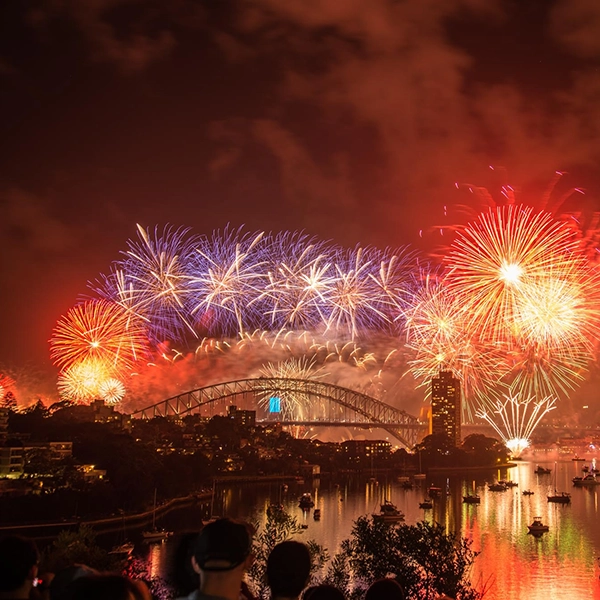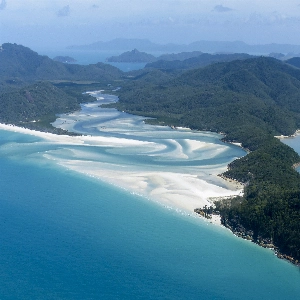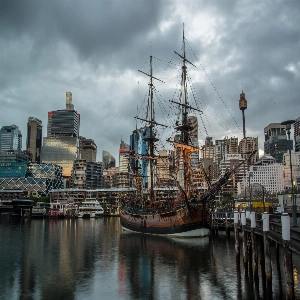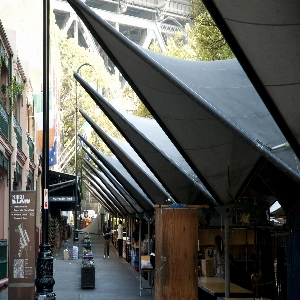Sydney Harbour Bridge

Introduction to Sydney Harbour Bridge
The Sydney Harbour Bridge, affectionately referred to as the "Coathanger" because of its arch-based design, is an iconic symbol of Australia's largest city. Completed in 1932, this impressive structure serves as the main connection between Sydney's central business district and the North Shore, allowing for efficient transportation and maintaining the vital bond between two thriving regions. Not only does the bridge function as a critical piece of infrastructure, but it also holds a special place in the hearts of Australians and serves as a symbol of the nation's ingenuity, resilience, and determination.
Design and Construction of the Bridge
The idea for constructing a bridge to connect Sydney's central business district (CBD) with the North Shore dates back to as early as 1815, but the project did not gain momentum until the early 20th century. World-renowned engineer John Bradfield submitted a winning proposal for an arch-based design in 1924, which provided the blueprint for the Sydney Harbour Bridge we know today.
The construction commenced in 1923, and it took over eight years for the work to be completed, employing more than 1,400 workers in the process. With a total length of 1,149 meters (3,770 feet) and a steel-arch spanning 503 meters (1,650 feet), the Harbour Bridge was, at the time of its completion, the world's widest long-span bridge and the tallest steel-arch bridge. Additionally, it boasts the distinction of being the fifth longest spanning-arch bridge in the world.
Despite the economic hardships and high unemployment rates during the Great Depression, the construction of the Sydney Harbour Bridge remained a priority for the Australian government, as it provided essential employment opportunities and represented a significant national achievement.
Significance of Sydney Harbour Bridge
The Sydney Harbour Bridge is not just an architectural marvel and critical transportation link, but it is also a cultural icon and integral part of Australia's national identity. The bridge has been central to significant events throughout its history, from playing a role in the opening ceremony of the 2000 Sydney Olympic Games to being prominently featured during annual New Year's Eve celebrations.
In addition, the Harbour Bridge works in tandem with the nearby Sydney Opera House, creating an unforgettable visual experience that has become synonymous with the city itself. Both landmarks are often photographed together, captured in stunning panoramas displaying Sydney's picturesque harbor and skyline.
The bridge has continued to evolve with the city, and visitors can stroll along the pedestrian pathway to appreciate views of the harbor, cycle on dedicated bike lanes, or experience the popular BridgeClimb attraction, which offers unparalleled vistas of the city below.
The BridgeClimb Experience
One of the premier tourist attractions in Sydney, the BridgeClimb allows adventurous visitors the opportunity to ascend the heights of the iconic structure, traversing up and over the massive steel arch while securely harnessed. Since its inception in 1998, the BridgeClimb has attracted more than four million climbers from over 140 countries. Those who embark on this incredible journey receive both thrilling views of the city skyline, as well as an intimate look at the engineering marvel that is the Harbour Bridge.
BridgeClimb offers several different climb routes and times, including dawn, daytime, twilight, and night climbs. Additionally, seasonal events like the Vivid Sydney light festival bring a unique twist to the experience, as climbers are immersed in a colorful choreographed light show while journeying to the top.
Upon reaching the summit, climbers are rewarded with a breathtaking 360-degree panorama of Sydney and its surrounding regions, providing unforgettable memories and life-long bragging rights.
Transportation on Sydney Harbour Bridge
Since its completion in 1932, the Sydney Harbour Bridge has remained the primary transportation link between Sydney's CBD and the bustling North Shore. The bridge carries eight vehicle lanes, two train lines, a pedestrian walkway, and a bike path, allowing for millions of people to traverse its span every year.
Initially, the bridge featured six wider lanes for motor vehicles, but as traffic demands increased throughout the 21st century, lane configurations were adjusted to accommodate the growing need for access to the city. Furthermore, public mass transportation options, such as buses and trains, have continued to play an increasingly essential role in bridging the gap between the North Shore and the CBD.
Future Plans for the Sydney Harbour Bridge
As Sydney's population continues to grow, plans are in place to further develop and improve the infrastructure surrounding the Harbour Bridge to meet future demands. In 2020, Transport for NSW announced plans for the Sydney Metro West project, which includes the construction of a second road tunnel beneath Sydney Harbour. This project aims to relieve traffic and congestion on the Harbour Bridge, and accommodate the rapid population growth seen in the Greater Sydney region.
Regardless of these future developments, the Sydney Harbour Bridge will continue to stand as a testament to Australian ingenuity and perseverance, remaining an integral part of Sydney's culture, history, and skyline.








